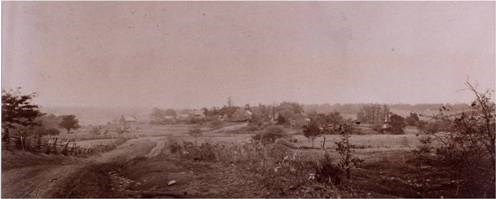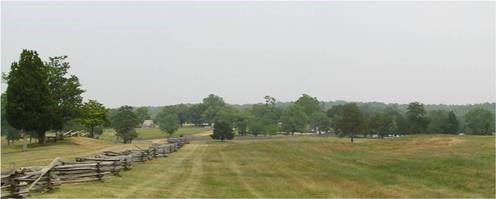
Richmond Stage Road looking east. 
Most visitors to Appomattox Court House National Historical Park only see the historical village where the surrender took place. Few realize that the park contains over 1,700 acres with a diversity of natural resources including various plant and animal communities, streams, wetlands, forests and agricultural lands. Although these lands were acquired to protect the battlefield and vistas, they are a part of the National Park Service’s mission to preserve and enhance the natural resources. Active resource management at Appomattox Court House National Historical Park addresses many issues that are directly related to the poor land management practices of the past 250 years. Loss of soil fertility due to erosion, introduction of non-native invasive plants and animals, loss of wetlands, loss of mature forests, and loss of native plant and animal species are legacies of the past. Efforts to improve wildlife and plants communities and historic landscapes must deal with these issues. Additionally, the park faces possible threats through nearby land development, introduction of new plant and wildlife diseases and pests, and climate change. The park contains eight miles of streams. All of the tributaries drain into the Appomattox River which bisects the park. Approximately 98 acres of wetlands are found within the park. Biological inventories conducted in the park have documented 498 species of vascular plants, 99 bird species, 22 mammal species, 13 reptile species, 17 amphibian species and 37 species of fish. |
Last updated: February 26, 2015
